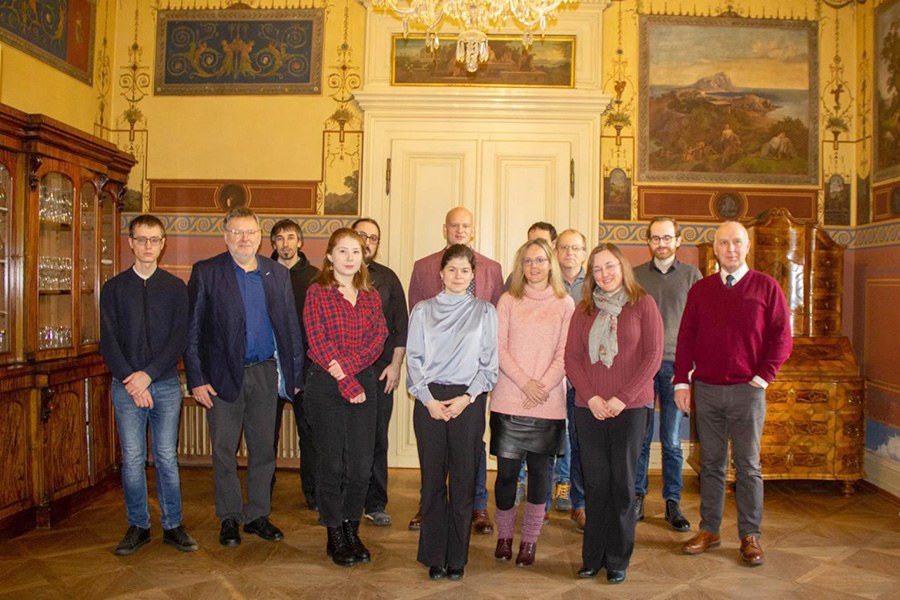Clean and safe nuclear fusion a step closer to reality

The V4F project offers a tantalising possibility of aneutronic fusion as a waste-free nuclear energy source and radical new configurations of particle accelerators, leading to efficient positron beam acceleration. The researchers expect their results to benefit society with new approaches to clean and safe energy production as well as significant downscaling of positron accelerators. They believe these will have dramatic impacts on medicine, industry, and fundamental science.
The project aims to prove that new technology can control the interactions of light with specially synthesised targets. This can significantly improve the energy balance of aneutronic fusion reactions. The target is to produce fusion energy easier, cheaper, and more reproducible than ever before. The situation where the output is more than the input enables unlimited green-energy fusion.
New concepts and advanced simulations of aneutronic fusion reactions and particle acceleration offer information that could increase alpha-particle yields from fusion reactions and mitigate the instabilities found in conventional fusion reactions.
Lasers developed at Tampere University
Dr Regina Gumenyuk, a young emerging research leader and Senior Research Fellow in the Advanced Coherent Sources Group at Tampere University, will lead the V4F consortium and the scientific activities of the project. Tampere University photonics researchers have developed and patented some of the fundamental high-power laser concepts and will be closely involved in designing and developing the innovative V4F laser. They aim to maximise the economic and societal benefits by transferring their technological expertise to the industrial sector.
“The formidable high-quality and multi-disciplinary expertise of the V4F consortium partners positions the project to uncover new knowledge of light-generation and light-matter interactions which could pave the way towards a breakthrough new technology,” says Regina Gumenyuk.
“The V4F consortium represents a unique opportunity to create new knowledge by bringing together experts from very different fields of science. It is a fantastic occasion for all of us to learn something new from each other, and to deliver breakthrough technology, with the potential of radically impacting society,” says Marco Ornigotti, group leader of the Theoretical Optics and Photonics group, who will provide the theoretical model for the V4F laser.
A Finnish company Ampliconyx oy will develop a novel configuration of a high-power fibre amplifying module based on its active tapered double-clad fibre technology and additional novel laser generation techniques. Ampliconyx was founded in 2016 as a spin-off of the Optoelectronics Research Centre at the then Tampere University of Technology.
“Our involvement in this exciting project will enable us to develop a completely new class of laser with characteristics far beyond existing laser systems,” says Dr Valery Filippov, CTO of Ampliconyx.

A thousand times smaller positron beam accelerators
An additional benefit arising from the technology being developed is that it could enable the construction of positron beam accelerators 1,000 times smaller than is currently possible. As such, the future International Linear Collider planned in Japan with a length of 31 kilometres, could be as short as 31 metres.
An efficient positron beam system could potentially be used in proton beam therapy to treat specific types of cancer. This could be developed within 10 years.
The consortium work is coordinated by Tampere University. The other consortium partners are the Institute of Plasma Physics AS in the Czech Republic, Leibniz Institute for Photonic Technologies E.V. in Germany, Ampliconyx oy in Finland, Institute of Inorganic Chemistry AV CR in the Czech Republic, Research Center Jülich GMBH in Germany and Modus Research and Innovation Limited in the UK.
The V4F project has a budget of EUR 3 million over a period of four years. It has received funding from the European Union’s Horizon Europe research and innovation programme.
Read more about the V4F project.
Further information
Regina Gumenyuk
+358 44 962 83 94
regina.gumenyuk [at] tuni.fi
Edited 3.2.2023: Added Marco Ornigotti's quotation.





